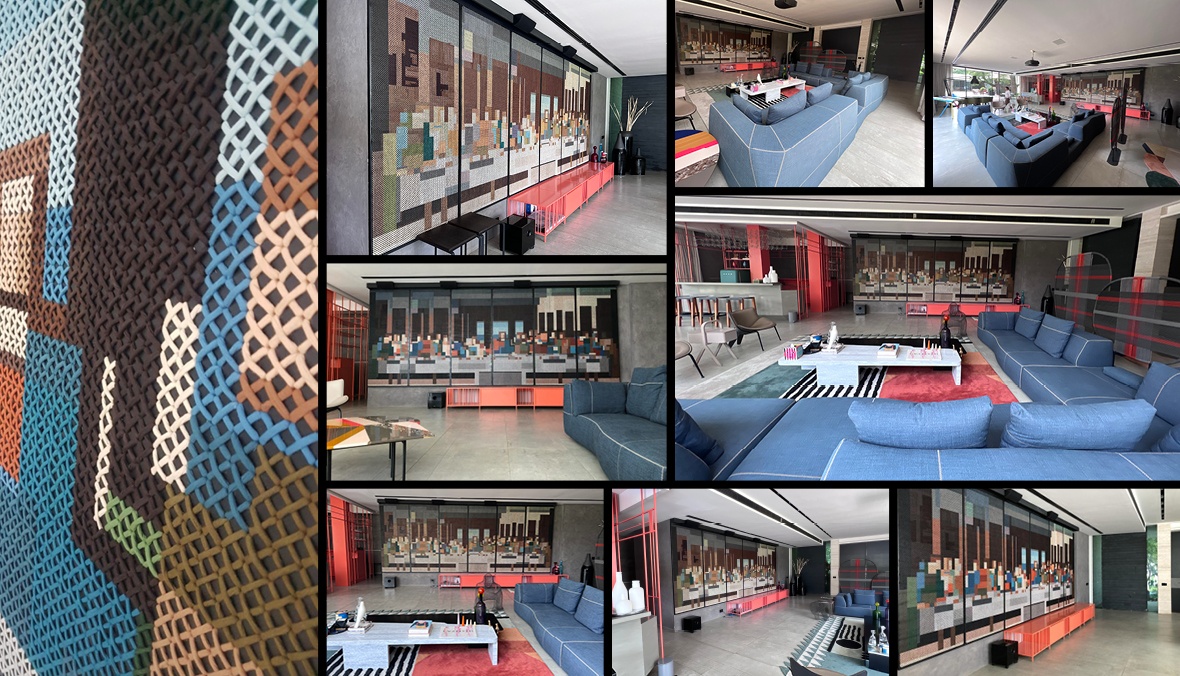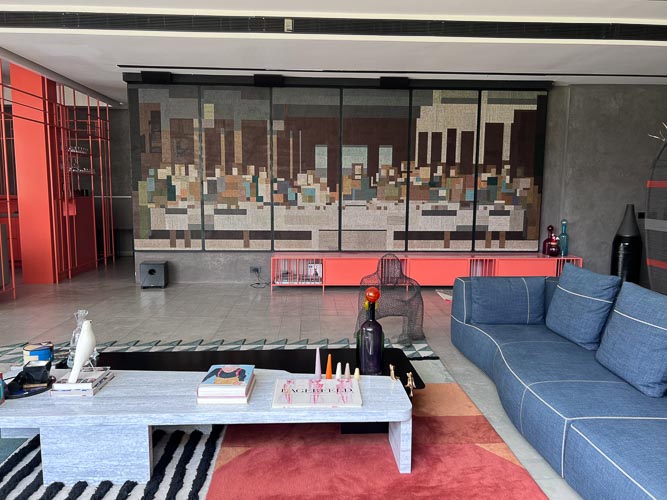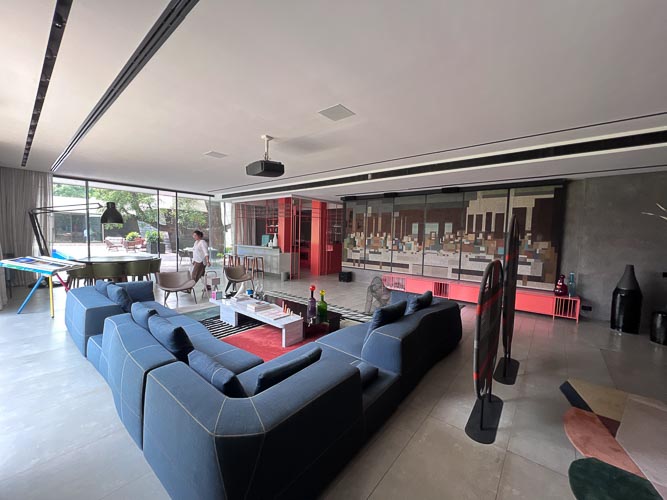Featured IBDA 2023
Reinterpreting a Masterpiece: da Vinci Decoded is India’s Best Design Project 2023

Inspired by Leonardo Da Vinci’s iconic painting, ‘The Last Supper,’ a unique artwork was created using cross-stitch on perforated metal sheets. This project exemplifies the blend of traditional craftsmanship and modern engineering, resulting in an awe-inspiring piece that redefines artistic boundaries.
Creative Solutions for a Complex Project
The journey from concept to implementation was fraught with challenges, considering the scale and semi-open nature of the space. Choosing the right material was crucial; the artwork needed to be sturdy, maintainable, and acoustic. To address these challenges, the designers chose engineered perforated metal sheets for their durability and acoustic properties. The metal sheets were coated to prevent rusting, ensuring longevity. The design was divided into six panels for easier assembly and transportation. Fabric cords, made from hand-dyed fabrics, were used in the cross-stitch embroidery technique, meeting the acoustic requirements. Finally, the artwork was clear-coated to make it dustproof and easy to maintain.

The Art of Craftsmanship
Creating this artwork was a meticulous process. Over two hundred meters of fabric was used, with around 200 meters of fabric cords produced manually each day. More than a hundred hues and shades of fabric were hand-dyed, and it took the designers over 1800 hours to complete the piece. This dedication to craftsmanship and attention to detail has enhanced the artwork’s appeal.

The installation of this artwork added character and vibrancy to the space. The use of colours and the intricate design have made the area a popular hangout spot. ‘da Vinci Decoded’ has become a benchmark project for NOYA, opening new doors and opportunities for future projects.

Credit: NOYA

